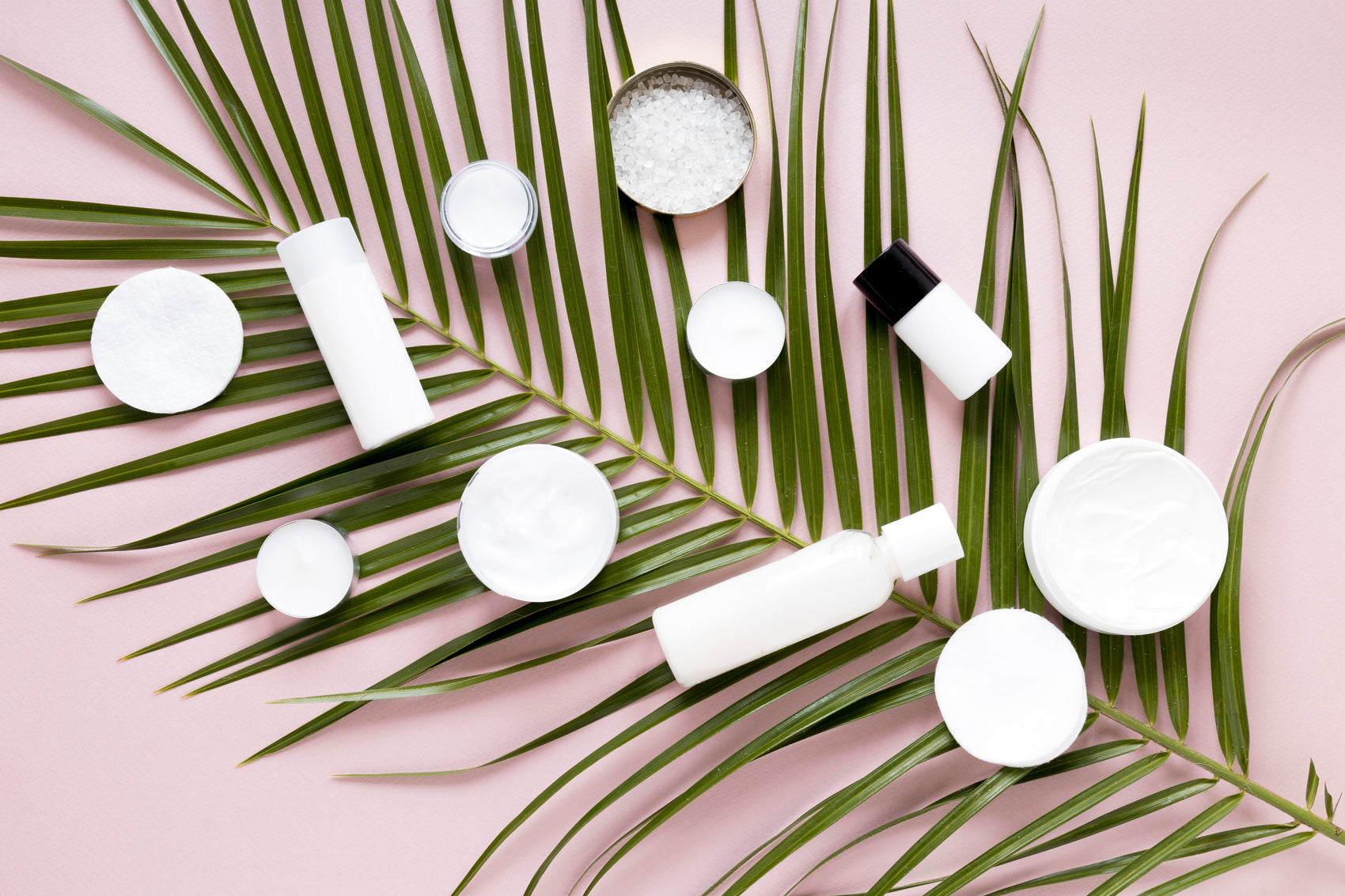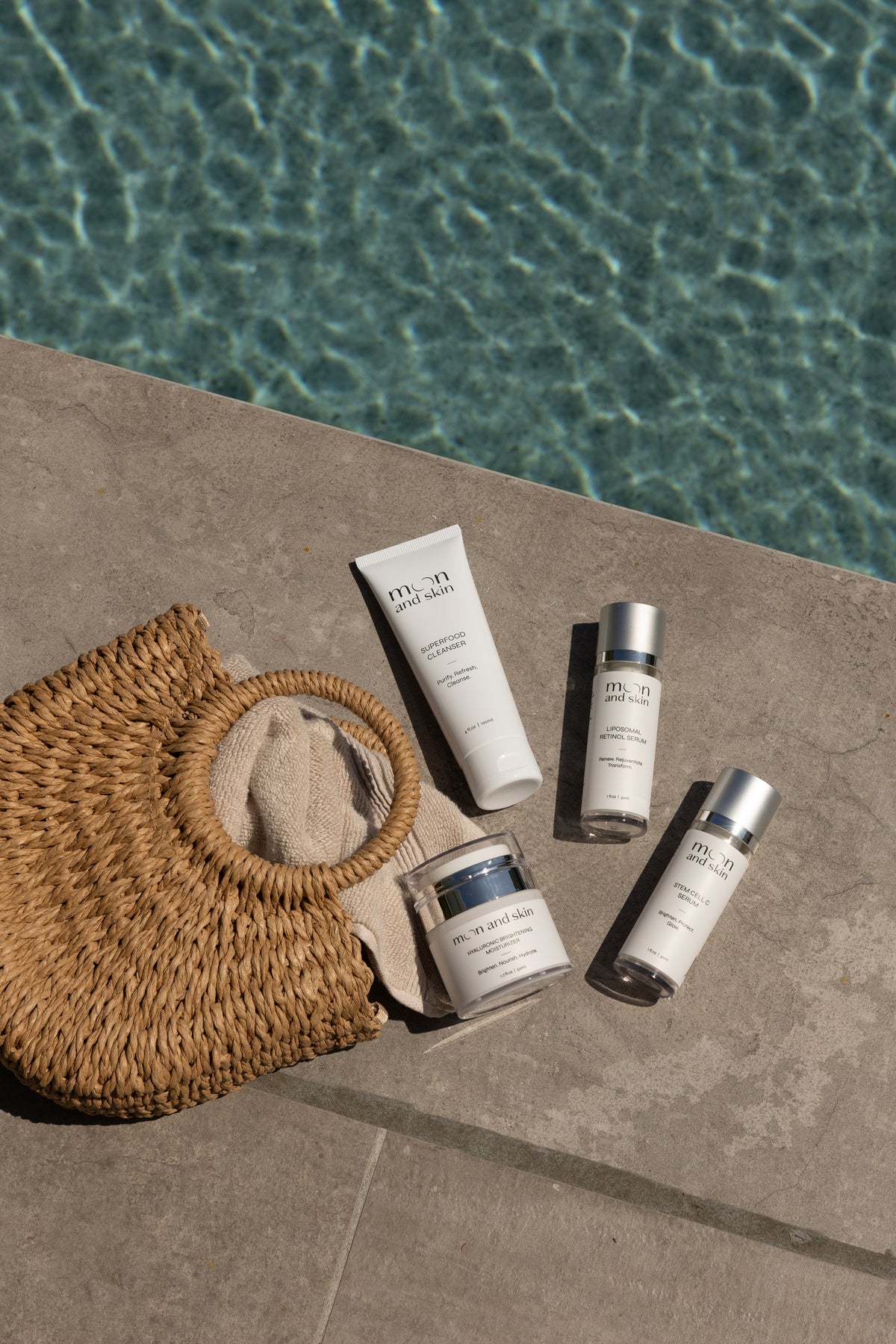Table of Contents
Introduction
Have you ever felt that annoying tightness in your skin after cleansing? You're not alone. Many people battle with dry skin, especially after washing their faces. The quest for the perfect moisturizer can often lead to confusion, especially with so many ingredients claiming to nourish and hydrate. One ingredient that consistently stands out in the skincare world is glycerin.
Glycerin, a natural humectant, has gained popularity for its impressive ability to draw moisture from the environment into the skin, making it a must-have for anyone seeking hydration. Today, we’re diving deep into how to use glycerin as a face moisturizer effectively, why it works wonders for your skin, and how to incorporate it into your skincare routine.
At Moon and Skin, we believe in clean, thoughtful skincare that nurtures your skin through every phase of life. Understanding the role of glycerin in skincare not only empowers you to make informed choices but also helps you celebrate your skin’s journey. So, let’s explore what glycerin is, its benefits, and how to use it effectively!
What is Glycerin?
Glycerin, also known as glycerol, is a colorless, odorless liquid that is derived from plant oils or animal fats. It is a natural by-product of soap-making and is widely used in the cosmetics industry due to its moisturizing properties. Glycerin is classified as a humectant, which means it has the incredible ability to attract water from the air and deeper layers of the skin to the outer layer.
When included in skincare products, glycerin works synergistically with occlusives—substances that lock moisture in. This dynamic duo is essential for maintaining skin hydration, especially in dry or low-humidity environments.
According to a study published in the Journal of Dermatological Science, glycerin is one of the most effective humectants available, surpassing other ingredients like hyaluronic acid and urea in hydrating the outer layer of the skin. Its unique properties make it a staple in many skincare formulations, including moisturizers, cleansers, and serums.
Benefits of Using Glycerin on Your Skin
Glycerin offers a multitude of benefits for the skin, making it a versatile ingredient for all skin types. Here are some of the key advantages of incorporating glycerin into your skincare routine:
1. Intense Hydration
One of the primary functions of glycerin is its ability to draw moisture to the skin. This is particularly beneficial for those with dry or dehydrated skin. By attracting water from the atmosphere and deeper skin layers, glycerin helps to keep the skin plump and hydrated throughout the day.
2. Skin Barrier Protection
Glycerin aids in strengthening the skin's natural barrier, which protects against environmental aggressors such as pollution and UV rays. A well-functioning barrier is crucial for overall skin health, as it prevents moisture loss and helps maintain a balanced complexion.
3. Soothing and Calming Effects
For those with sensitive or irritated skin, glycerin can provide a soothing effect. Its gentle nature helps to calm redness and inflammation, making it suitable for even the most delicate skin types.
4. Enhanced Skin Texture
Regular use of glycerin can improve skin texture by promoting cell turnover and aiding in the repair of damaged skin. This can result in a smoother, more even complexion, reducing the appearance of rough patches and uneven tone.
5. Non-Comedogenic
Glycerin is non-comedogenic, which means it won't clog pores. This makes it an excellent option for those with oily or acne-prone skin, as it hydrates without adding excess oil.
6. Anti-Aging Properties
As we age, our skin naturally loses moisture, leading to the formation of fine lines and wrinkles. Glycerin helps combat this by providing essential hydration and maintaining skin elasticity, contributing to a more youthful appearance.
7. Wound Healing
Research has shown that glycerin can accelerate wound healing processes, making it beneficial for those with minor cuts or irritation on the skin. Its moisturizing properties help create an optimal environment for skin recovery.
8. Compatibility with Other Ingredients
Glycerin works well with a variety of other skincare ingredients, enhancing their effectiveness. It can be combined with vitamins, acids, and oils to create a customized skincare routine tailored to your specific needs.
How to Use Glycerin as a Face Moisturizer
Incorporating glycerin into your skincare routine is simple and can be tailored to your individual preferences. Here’s how to use glycerin effectively as a face moisturizer:
Step 1: Choose the Right Product
While glycerin can be used in its pure form, we recommend opting for products that contain glycerin as a key ingredient. Our Hyaluronic Brightening Moisturizer is an excellent choice, as it combines glycerin with other hydrating agents to enhance its effects.
Step 2: Patch Test
Before using glycerin on your entire face, it’s essential to perform a patch test. Dilute glycerin with water or rose water and apply a small amount to a discreet area of your skin (like your inner forearm). Wait 24 hours to check for any adverse reactions.
Step 3: Cleanse Your Skin
Start with a clean slate. Gently cleanse your face using a mild cleanser to remove dirt, oil, and makeup. Our Superfood Cleanser is perfect for this step, as it nourishes while cleansing.
Step 4: Apply Glycerin
If you’re using a glycerin-based moisturizer, simply apply a small amount evenly to your face and neck, avoiding the eye area. If you’re using pure glycerin, dilute it with water or mix it with your favorite moisturizer to prevent irritation.
Step 5: Massage Gently
Using gentle, upward motions, massage the glycerin into your skin. This helps ensure even coverage and allows your skin to absorb the product effectively.
Step 6: Allow Absorption
Give your skin a few minutes to absorb the glycerin before applying any additional products, like serums or makeup. You shouldn't feel any sticky residue; instead, your skin should feel smooth and hydrated.
Step 7: Follow with Sunscreen (Daytime)
If you’re using glycerin during the day, always follow up with a broad-spectrum sunscreen. Glycerin doesn’t provide sun protection, so it’s crucial to shield your skin from harmful UV rays.
Step 8: Monitor Your Skin
Pay attention to how your skin reacts to glycerin over time. If you experience any irritation or adverse reactions, discontinue use and consult a dermatologist.
Bonus Tip: Use Glycerin as a Facial Mist
For an extra hydration boost throughout the day, consider making a simple facial mist by mixing glycerin with water or rose water. This refreshing spray can be used anytime your skin feels dry or tight.
Precautions and Tips for Using Glycerin
While glycerin is generally safe for most skin types, there are a few precautions to keep in mind:
- Dilution is Key: Always dilute glycerin before applying it directly to your skin to avoid irritation. Mixing it with water or another hydrating ingredient, like rose water, is ideal.
- Avoid Excessive Use: Using too much glycerin can lead to over-hydration, especially for oily skin types. Stick to a small amount and adjust based on your skin's needs.
- Patch Test: Always perform a patch test before using new products, especially if you have sensitive skin.
- Monitor Weather Conditions: In extremely dry or low-humidity environments, glycerin may pull moisture from your skin rather than the air. Be mindful of your surroundings and adjust your usage accordingly.
Conclusion
Glycerin is a powerhouse ingredient that can transform your skincare routine by providing deep hydration, improving skin texture, and protecting your skin barrier. By understanding how to use glycerin effectively, you can unlock its full potential and enjoy a glowing, healthy complexion.
At Moon and Skin, we are here to support you every step of the way. Our products, like the Hyaluronic Brightening Moisturizer and Superfood Cleanser, are designed to work harmoniously with your skin, ensuring you get the nourishment you deserve.
Ready to embrace glycerin in your skincare routine? Explore our Bundle & Save collection for a complete regimen that celebrates your skin’s journey through every phase of life.
FAQ
1. Can I use glycerin directly on my face? While glycerin can be used directly, it’s important to dilute it first to avoid irritation.
2. Is glycerin suitable for all skin types? Yes, glycerin is non-comedogenic and can benefit dry, oily, sensitive, and combination skin.
3. How often should I use glycerin? You can use glycerin-based products once or twice a day, depending on your skin's needs.
4. Can I leave glycerin on overnight? Yes, glycerin can be left on overnight, but ensure it’s diluted properly to avoid any adverse reactions.
5. Are there any side effects of using glycerin? Glycerin is generally safe, but some people may experience irritation if used in high concentrations. Always perform a patch test before full application.
We hope this guide empowers you to incorporate glycerin into your skincare routine, allowing you to enjoy the benefits of hydrated and healthy skin!







